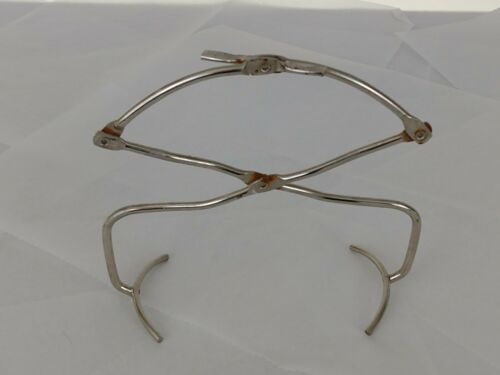Beehive Honey Bee winter termo 2 Storey Bee Cozy UV wrap for WINTER FREEZE
Beehive Honey Bee winter Thermo-Protect suit UV treated polypropylene wrap It is a large package to ship so cost me a lot. Continental USA shipping only.we have hot summer and for sure will be long and cold winter. I study this. good for second wave of cold Fall 2021 buy NOW and save. We will
Beehive Honey Bee winter Thermo-Protect suit UV treated polypropylene wrap It is a large package to ship so cost me a lot. Continental USA shipping only.we have hot summer and for sure will be long and cold winter. I study this. good for second wave of cold Fall 2021 buy NOW and save. We will send you link to make a payment via ebay to our Merchant account. I did deliver 6 units to NC yesterday to another Beekeeper. I study and research bee since 1981. Commit to Purchase on eBay and we will send you a payment link to our Merchant account and we will post Paid on Ebay.What are Frost Dates? A frost date is the average date of the first or last light freeze that occurs in spring or fall. Note that local weather and topography may cause considerable variations. The possibility of frostoccurring after the given spring dates and before the given fall dates is 50 percent. 2 Storey Bee CozyI did study bees Bees since 1981. Please check my other Ebay listings. We save You A LOT OF HONEY and often save weak Bee Colony. Great for cold climate. The Bee Cozy Winter Wraps have been helping colonies come through the winter strong and read for honey production for over 23 years. Bee Cozy provides one more defense to keep your bees healthier, longer and healthier bees are more productive. Lightweight and easy to slip on and off, Bee Cozy is also easy to store from year to year. Bee Cozy is easy to use slip-on, slip-off UV treated polypropylene wraps contain environmentally friendly R8 fiberglass, just the insulating layer your bees need to get through the winter successfully. Bee Cozies protect your hives from freezing winter temperatures and provide a windbreak for breezy locations. Measurements 24”will cover two hive bodies.Pollinators are critical to the Nation’s economy, food security, and environmental health. Honey bee pollination alone adds more than $15 billion in value to agricultural crops each year, and helps ensure that our diets include ample fruits, nuts, and vegetables. This tremendously valuable service is provided to society by honey bees, native bees and other insect pollinators, birds, and bats.A honey bee, with pollen attached to its hind leg, pollinating a watermelon flower. (Photo by Stephen Ausmus/USDA)But pollinators are struggling. Last year, beekeepers reported losing about 40% of honey bee colonies, threatening the viability of their livelihoods and the essential pollination services their bees provide to agriculture. Monarch butterflies, too, are in jeopardy. The number of overwintering Monarchs in Mexico’s forests has declined by 90% or more over the past two decades, placing the iconic annual North American Monarch migration at risk. That’s why last June, President Obama issued a Presidential Memorandum directing an interagency Task Force to create a Strategy to Promote the Health of Honey Bees and Other Pollinators. Today, under the leadership of the U.S. Environmental Protection Agency (EPA) and U.S. Department of Agriculture (USDA), the Task Force is releasing its Strategy, with three overarching goals:Reduce honey bee colony losses to economically sustainable levels;Increase monarch butterfly numbers to protect the annual migration; andRestore or enhance millions of acres of land for pollinators through combined public and private action.The Strategy released today and its accompanying science-based Pollinator Research Action Planoutline needs and priority actions to better understand pollinator losses and improve pollinator health. These actions will be supported by coordination of existing Federal research efforts and accompanied by a request to Congress for additional resources to respond to the pollinator losses that are being experienced.Increasing the quantity and quality of habitat for pollinators is a major part of this effort—with actions ranging from the construction of pollinator gardens at Federal buildings to the restoration of millions of acres of Federally managed lands and similar actions on private lands. To support these habitat-focused efforts, USDA and the Department of Interior are today issuing a set ofPollinator-Friendly Best Management Practices for Federal Lands, providing practical guidance for planners and managers with land stewardship responsibilities. The President has emphasized the need for an “all hands on deck” approach to promoting pollinator health, including engagement of citizens and communities and the forging of public-private partnerships. To foster collaboration, the interagency Pollinator Health Task Force will work toward developing a Partnership Action Plan that guides coordination with the many state, local, industry, and citizen groups with interests in and capacities to help tackle the challenge facing pollinators.People of all ages and communities across the country can play a role in responding to the President’s call to action. YOU can share some land with pollinators—bees, butterflies, other insects, birds, bats—by planting a pollinator garden or setting aside some natural habitat. YOU can think carefully before applying any pesticides and always follow the label instructions. YOU can find out more about the pollinator species that live near you.Today’s announcement marks an important step toward promoting the health of pollinators that are critically important to our economy, environment, and health.Read the National Strategy to Promote Pollinator Health HERERead the Pollinator Research Action Plan HERERead Pollinator-Friendly Best Management Practices for Federal Lands HEREAccess Appendices to the National Strategy HEREDr. John P. Holdren is Assistant to the President for Science & Technology and Director of the White House Office of Science and Technology Policy.







Comments
Comments are disabled for this post.